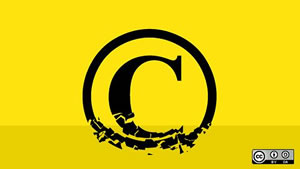Can a student’s knowledge dissemination be an intellectual copyright violation?
 Is note sharing is an infringement on professors’ intellectual property rights? And can this way of thinking be justified in the age of collaborative, peer-to-peer learning?
Is note sharing is an infringement on professors’ intellectual property rights? And can this way of thinking be justified in the age of collaborative, peer-to-peer learning?
What most professors do in the classroom is try to explain their discipline, whether that’s history or mathematics. Professors simplify, organize, and create coherent lessons so that students can become creative, deep thinkers on their own. They provide information so that students can develop their own approach. We call this critical thinking.
However, if we really want students to create new knowledge, to interpret the world, and to truly become critical thinkers, we must allow them to express themselves not only in the classroom – but also with other students – using the information that we guide them to.
The issue over note sharing
We have learned over the last two or three decades that collaborative learning can be very effective in higher education, and peer-to-peer learning is really the next frontier. This can come in a variety of different forms like online tutoring, one-on-one meetings, and it can also come in the form of sharing notes. To a certain extent, the sharing of notes is just a different kind of collaborative learning that’s been going on for centuries.
However, as note sharing has become an increasingly popular at higher education institutions across the country, it has been met with some resistance. Though a small minority, some professors believe that note sharing is an infringement of their intellectual property rights. I disagree with this notion. I also believe that professors are limiting students’ ability to succeed if they are not allowing them to help each other learn.
(Next page: Facts as copyright and artistic license)
Facts cannot be subject to copyright
There are a limited number of ways to define or explain a certain concept to students. There are only a few definitions of photosynthesis, for example. Those definitions are repeated year in and year out by professors. They are not copyrighted—a professor does not own the definition of photosynthesis, or the meaning of supply & demand, or the definition of psychology; they got it from their professors’ lectures and are passing that knowledge on to the next generation.
The notion that they own this information or that it is their intellectual property is just not true. Heck, the information is right on Wikipedia! It could only be their intellectual property if it was a unique, clever, could-only-have-been-done-by-them description or analysis—and even then, they have literally been hired to share that information with the world. The goal is to help students learn and succeed—not to protect a professor’s words. If a professor wants to coin a phrase, an idea, or a new thought, he or she should write a book and sell it in the marketplace. College is a place for sharing, collaborating, and helping others to grow.
Artistic license should be a consideration
Further, what students do in their own notes, creations, and writing simply does not belong to a professor. I’m a photographer by avocation, for example. If I take a particular image of the Eiffel Tower and I manipulate it in an artistic way, or if I paint the Eiffel Tower in charcoals, it is my work. I have the right to sell it and to gain financial benefit from it because it is mine. My work is a unique interpretation. My work is not the definition of what the Eiffel Tower is (e.g. a structure in Paris, built as part of the World’s Fair that was named after Gustav Eiffel). A professor of French Cultural History does not own my artistic interpretation of the Eiffel Tower.
Therefore, professors do not own students’ individual interpretations of what they have been taught in the classroom. We should celebrate students’ taking what we have taught and interpreting and embellishing it. The classic idea that “my student has become my teacher” should be embraced.
Why the fuss?
Why are we limiting our own students and calling it IP infringement? Why is it that today’s professors are resisting this form of collaborative learning because their students are using the knowledge they’ve gained in class to succeed, to become critical thinkers, and to become productive members of society?
We must recognize that a professor lecturing in front of a classroom is not the only way to do learning. It’s time for all of us to come together and make a larger shift as an industry. We need to embrace note sharing and collaborative learning, and we need to embrace it with enthusiasm—rather than with resistance. We need to embrace it not just in word, but in deed.
It’s time to transform the learning process, and to empower students to help each other succeed. It’s time to collaborate.
A psychology professor and best-selling textbook author, Dr. Lester A. Lefton is President Emeritus of Kent State University where he oversaw one of the nation’s largest university systems. Dr. Lefton now serves on the Board of Directors at Flashnotes.com, the student-to-student study materials marketplace.
- 25 education trends for 2018 - January 1, 2018
- IT #1: 6 essential technologies on the higher ed horizon - December 27, 2017
- #3: 3 big ways today’s college students are different from just a decade ago - December 27, 2017


Comments are closed.